Illustrations Shatter the Stereotypes of Sexual Fetishes

By:
It's not easy having a fetish.
While pop culture certainly seems more accepting of different types of bodies and sexual preferences, many fetishes remain in the shadows, and are often dismissed as creepy or weird.
But now our friends in France are fighting back for fetishes.
The new French publication Féros casts the spotlight on artists who explore our sexual dark sides.
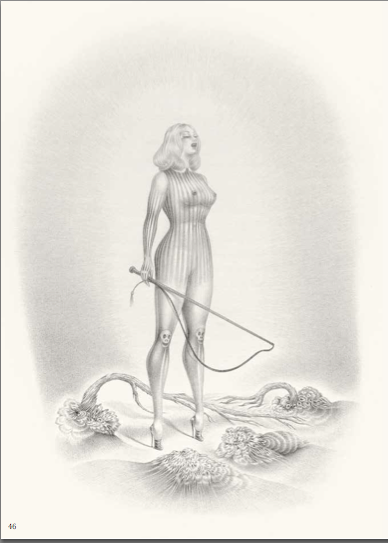 Féros©/Mirka Lugosi
Féros©/Mirka Lugosi
In its first issue, Féros features 15 contemporary artists inspired by the desires and fantasies we often suppress, or don't want to talk about openly. It also pushes back against the assumption that fetishes are merely fodder for NSFW pornography, and shows that they can be expressed creatively and complexly.
“The whole idea of "Féros" is to reflect these urges – the psychosis and neurosis that we all may encounter in our lives," Editor-in-Chief Clément Gagliano told Dazed.
Here are some of the artists celebrating fetishes.
Lise Stoufflet's paintings explore l’absurdité des réminiscences de la jeunesse, which basically means "the absurdity of youthful memories," according to an introduction in the magazine. Stoufflet is all about how we explore sexuality as children, and the boundaries between nightmares and fantasy.
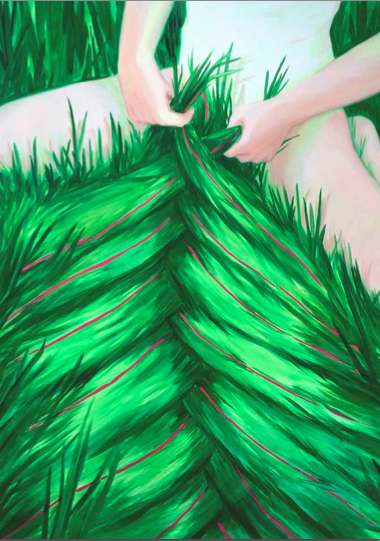 Féros©/Lise Stoufflet
Féros©/Lise Stoufflet
“People talk about everything, including sex, without really thinking about it, and without having anything to say,” Gagliano told Dazed. “The worst thing is that nobody truly cares. You just need to dig a little deeper to realise that what happens in public usually prevents people from being open in private. Because nothing is left to give. When you wear your insides as a jacket, what is left in? Not much, I'd say.”
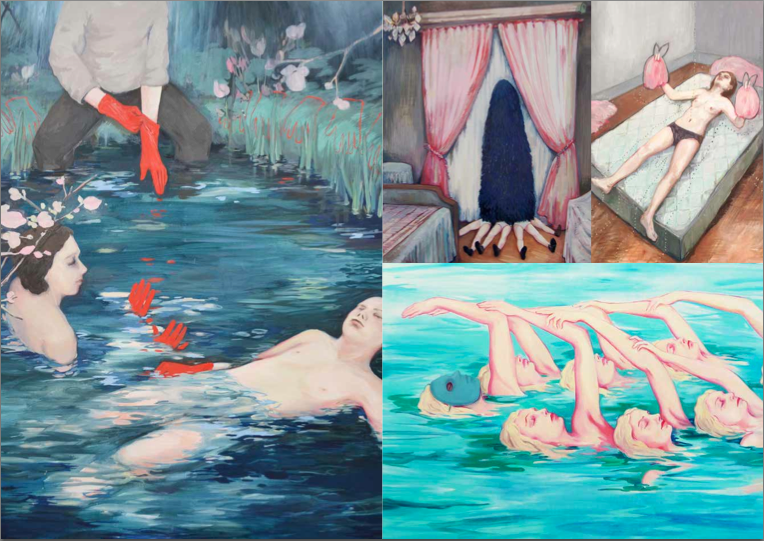 Féros©/Lise Stoufflet
Féros©/Lise Stoufflet
Paul Kooiker's images (below) focus on an isolated body positioned for the camera, forcing the audience to focus on how watching and being watched influences how bodies are perceived and sexualized.
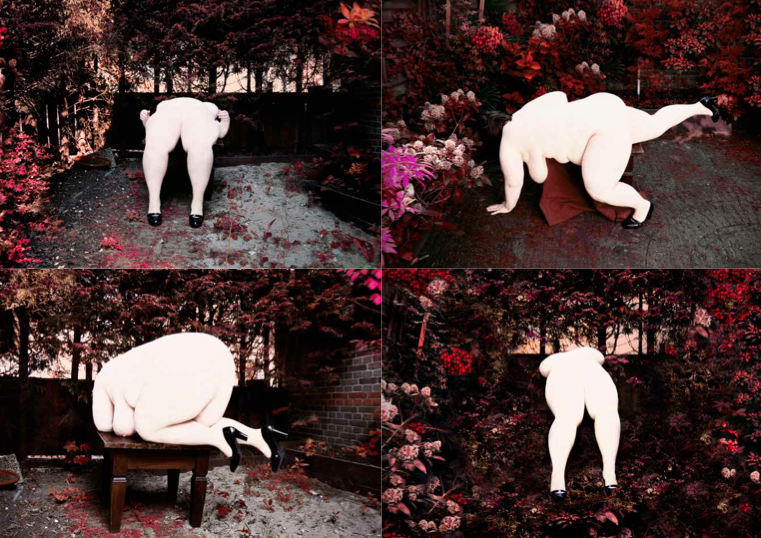 Féros©/Paul Kooiker
Féros©/Paul Kooiker
Apollonia Sinclair's illustration series "Ink is my blood," depict heightened female pleasure — even when she is being penetrated, the woman is at the center of the canvas, using her hand to take control over the act of intercourse.
In mainstream pornography, women are often shown as extremely submissive or extremely dominant — Sinclaire's illustrations depict a woman taking control during sex, yet she remains fully human, and isn't relegated to dominatrix clichés. They also focus on unrestrained female pleasure.
“Where is the fun when everything you see suffers from morbid banality? Nothing’s forbidden," Gagliano told Dazed.
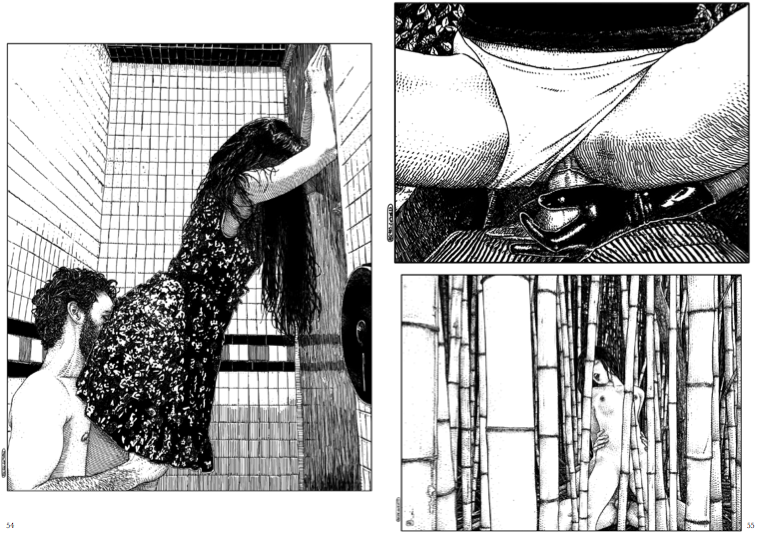 Féros©/Apollonia Saintclair
Féros©/Apollonia Saintclair
Cath Orain used the form of embroidery, historically a domestic craft, to depict erotic pin ups. According to Dorothy Bonnard, who introduced the pieces, Orain was inspired by Japanese erotic comics and each piece took 3 to 6 months of work. Orain added beads, sequins and lace to add delicacy and sensuality to the images, subverting the "dirty" associations of sexual vice and depicting them as somewhat romantic.
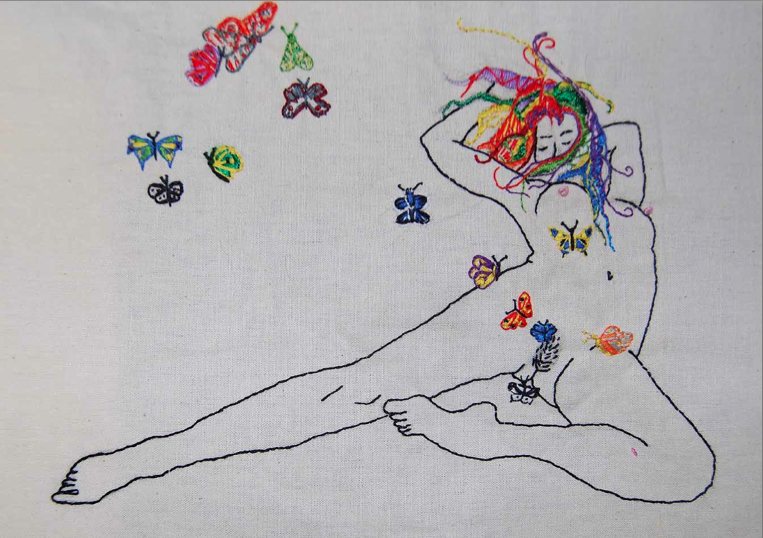 Féros©/Cath Orain
Féros©/Cath Orain
Fetishes aren't that uncommon.
A recent study published in The Journal of Sex Research found that four out of the eight types of sexual behavior listed as 'anomalous' in the DSM-5 were common among men and women, the Independent reported.
 BigStock/Sonsedskaya - bigstockphoto.com
BigStock/Sonsedskaya - bigstockphoto.com
"Overall, nearly half (45.6%) of the sample subjects were interested in at least one type of sexual behaviour that is considered anomalous, whereas one third (33%) had experienced the behaviour at least once," Professor Christian Joyal, one of the study's authors, explained.
Subjects were also less hesitant to reveal fetishes online, rather than over the phone, suggesting that there still a degree of shame associated with them.
Jane Ward, an associate professor of gender and sexuality studies at the University of California, Riverside, told ATTN: that we tend to think of fetishes in a Freudian context, as a stand-in for another form of repressed desire.
"So, I think, sometimes there's a salacious quality around media coverage of fetish: "Look at all of these weird things that weird people are attracted to." But I think we should really think about fetish instead as the leading edge of our human sexuality: that we're growing as a species to be able to imagine new objects of sexual desire," Ward said.
To Freud, fetishes represented some form of repressed trauma, Ward said, but that doesn't take the diversity of people's experiences and psychological urges into account.
"One person's fetish is another person's main menu item," she explained.
You can buy a copy and learn more about Féros on their website.
